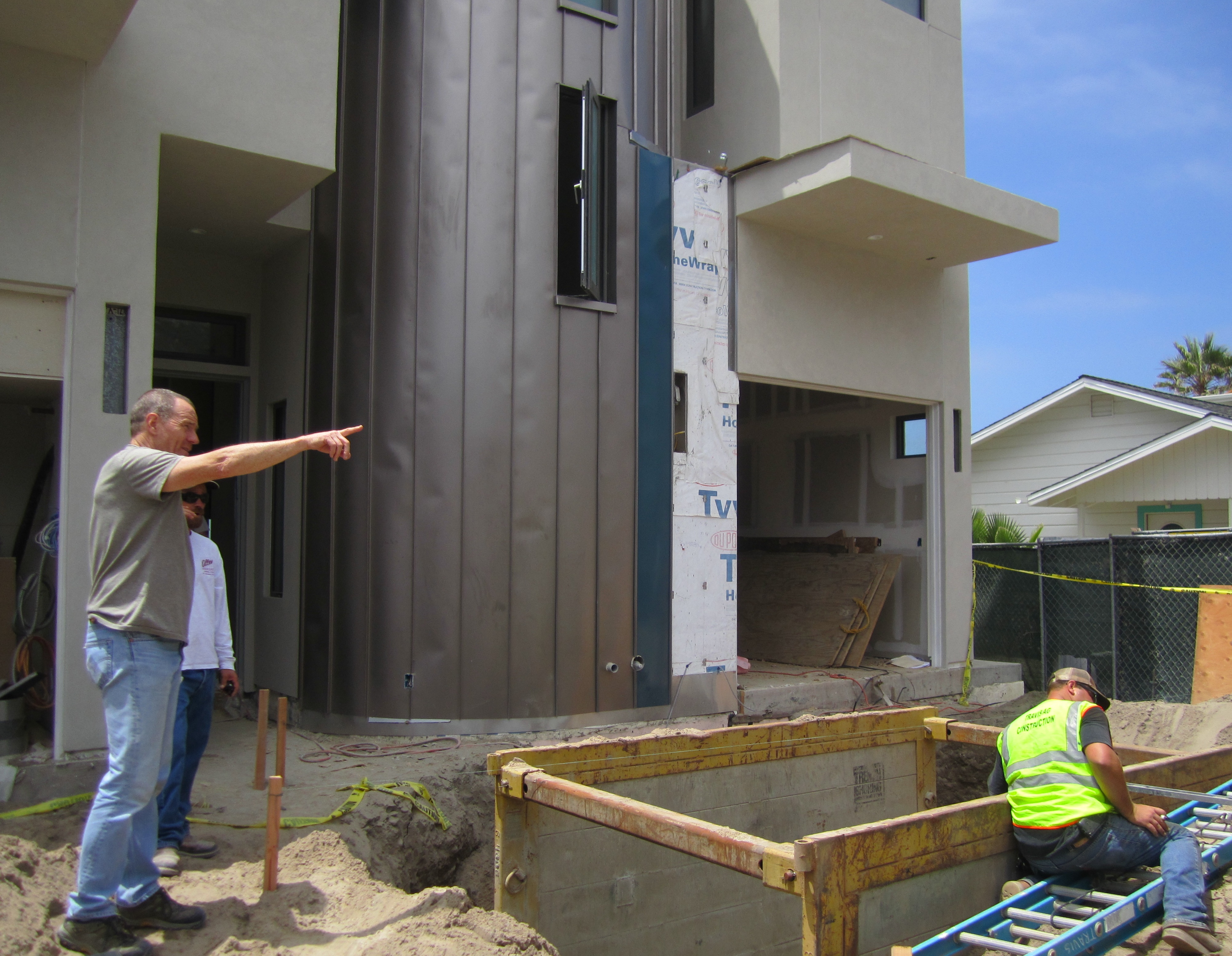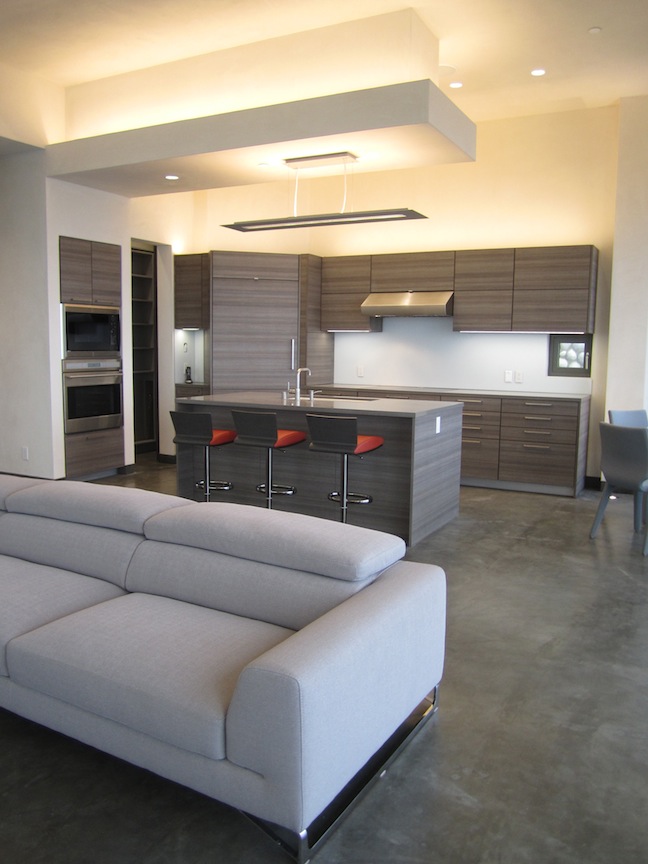Whenever Bryan Cranston, the star of the award winning TV drama Breaking Bad, goes walking along the beach that borders his newly built Los Angeles home, he does more than enjoy the view. He comes back with things in his hands he didn’t have when he left. Toys, bottles, other trash – and he recycles them. “Whenever you go camping you leave your campsite better then you found it. You police the area when you’re done,” Cranston said. “The end result is that it makes your environment look better.” This is the philosophy he followed in tearing down the deteriorating oceanfront house he and his wife dubbed the Love Shack, and designing and building a new home certified to LEED® for Homes Platinum standards. He was following a way of life that had been ingrained in him since childhood, when his parents taught him not to ever waste anything. “It’s not different from showing common courtesy to your fellow man, so I just feel like we’re showing common courtesy to the earth to not be wasteful,” Cranston said. Cranston decided to seek LEED certification because he wanted his new house to be recognized as a high-performance, sustainable home, and in the hopes that it might help to promote green building and a sustainable lifestyle. “It’s not given, you have to earn that, and what we want is that to be the norm,” said Cranston of LEED certification. “We want people to go, oh, I know what that means. It’s recognition for my home and I’m proud of it.” Cranston was involved with his home’s creation every step of the way, from conception to design to the actual building of the home, which they dubbed 3Palms for the three Mexican Fan Palm trees on the property that they were able to preserve throughout the building process. “[Bryan] was really integral in every decision,” General Contractor Bryan Henson said. “He’d go through every square inch.”

He has also been very public about 3Palms. He has a website devoted to his high-performance, sustainable home that includes information, pictures and videos of 3Palms now, and throughout the building process. He also spoke about his home at the Dwell on Design 2012 conference, and appeared in a segment about plans for his home before it was built on Real Green TV. “Having people like him build a LEED-certified house and talk about it publicly and often is a good thing, absolutely, no question about it. The more people become aware about this stuff, the better,” said LEED Green Rater Steve Mann, who inspected the project for certification. “I wish there were more high profile people like him.” Just a few in the long list of 3Palms’ high-performance features include a rainwater catchment system that harvests 100 percent of the rainwater on the roof, radiant floors with in-floor thermostats, titanium sheets on the outside of the home for durability and structural insulated panels for the building shell. The interior walls were finished with American clay plaster, which contributes to healthy air quality. 3Palms is 56 percent more energy efficient than a home in California built to energy code, with 41 percent of the home’s energy derived from its solar electric system.

Cranston also carried his philosophy of reusing and recycling through to the building of his home. For example, the plants growing on the property were dug up, saved, and replanted – keeping the foliage at 3Palms all native. Altogether, 76 percent of the project’s construction waste was recycled or diverted. “We were very fortunate in that Bryan was very motivated because of his own kind of care and ethic to be as responsible as he could,” Henson said. “He would frequently ask us, ‘What does this mean for LEED?’” Cranston stressed that despite the many high-end and high-tech features he chose to include in his home, LEED certification can be reached with much less expense, and is a viable and valuable avenue for any homeowner. “Yes, I’m very fortunate that I can financially support the lifestyle that I choose to live, but I’ve been living this way on a lower economic status for all my adult life,” Cranston said. “You carefully choose items and products that support the earth, that do the least amount of harm, and try to live harmoniously with your environment.” LEED, says Henson, helps homeowners and builders stick to the original plan of a high-performance, sustainable home, not leaving certain aspects by the wayside for convenience’s sake. LEED’s measures teach builders how to build more efficient, durable homes, and carry that knowledge on to all their projects, even those that do not seek certification. “I think a lot of people who haven’t gone through a LEED project look at LEED as a checklist,” Henson said. “I really look at it as a process by which you can get to a better project.” Mann adds that the LEED process is much simpler and less expensive than people assume. “A lot of people think that it’s really hard to get a LEED certification for a house, and it really isn’t all that hard. If you learn about the system and what’s required, it’s pretty straightforward,” Mann said. “Someone else could get the same level of certification (as Cranston) with a much more modest building with a lot less expense.”

Cranston and his family have a motto for 3Palms: “Nothing happens to the house and nothing comes into the house unless it’s special." This means that guests who find rocks or shells on the beach that seem special to them can set them on the windowsill to save. This means that when the family looks for artwork, they make sure it is special to them, and has been created sustainably, the paint containing low VOCs, for example. This means being conscious of the things they buy – where they are made, and how they are made. And most importantly this means that the home itself was carefully designed and thought out at every step, that it is comfortable, durable and safe, that it lives in harmony with its environment and its inhabitants.